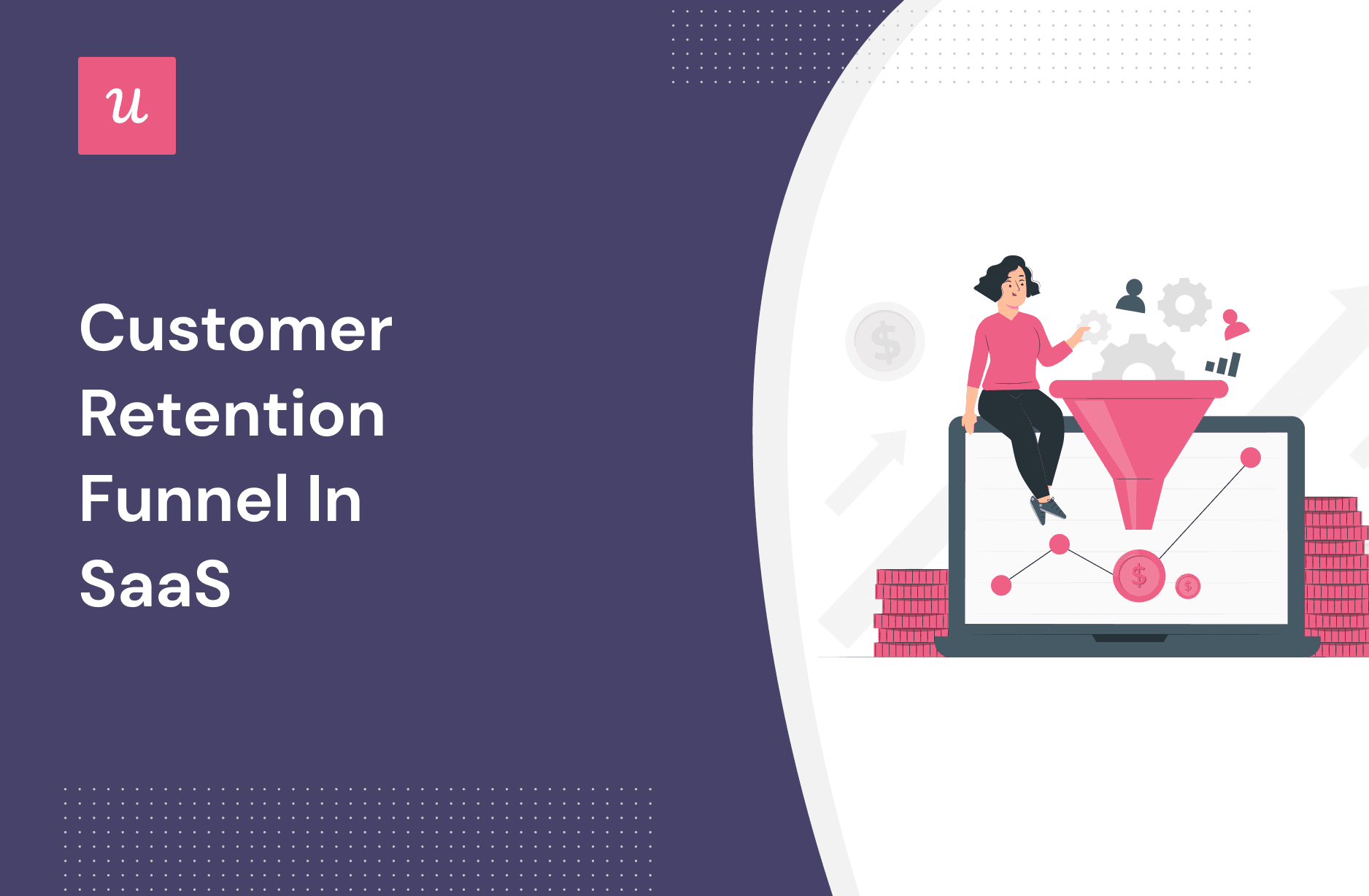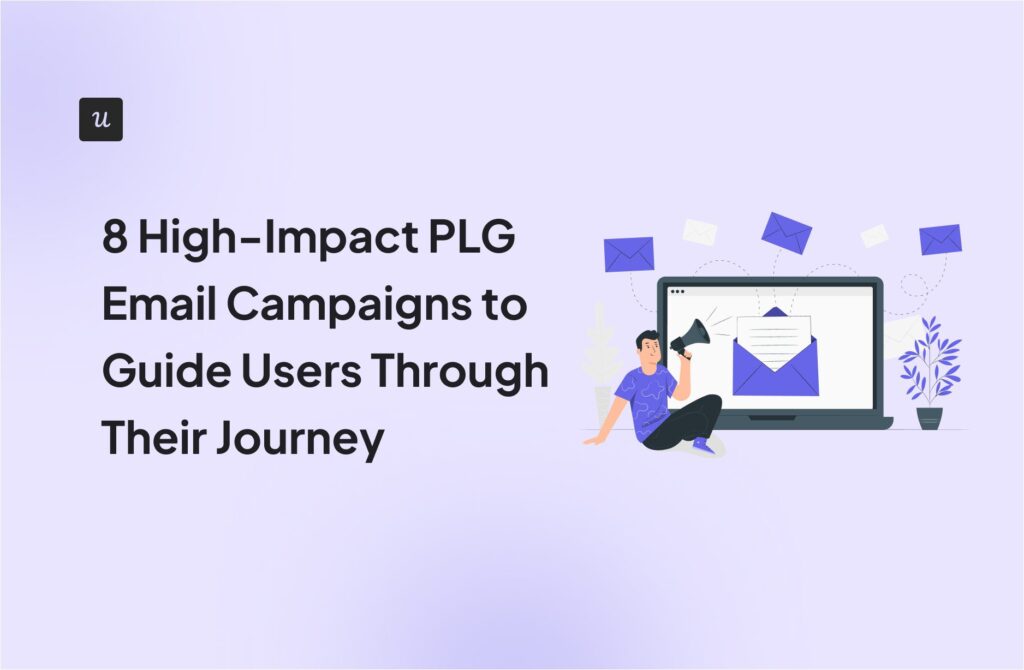
Optimizing your retention funnel is a term that gets thrown around a ton in the product-led world, but what does it really mean?
If you’re confused and looking for the answer, we’ve got you covered. In this article, we’re going to discuss what the retention funnel really is and how you can perfect it.
Let’s dive right in!
Get The Insights!
The fastest way to learn about Product Growth, Management & Trends.
What is a retention funnel?
A customer retention funnel is a business framework that maps the different phases of the customer journey with a company, from the initial purchase stage to ultimately gaining customer loyalty.
In other words, the retention funnel serves as a visual representation of the steps you need to take to nurture customer relationships and foster long-term loyalty.
Main customer retention funnel key stages for a SaaS product or service
The customer retention funnel for SaaS products or services is divided into 7 different stages based on the customer’s activity and engagement behavior.
Before looking at what these stages are, it is important to point out the difference between the customer retention funnel and the sales funnel, because the two terms are often confused together.
In a regular sales funnel, the objective is to keep bringing in new customers to make the final purchase. However, in the customer retention funnel, the objective is more on retaining existing customers even after they’ve made a purchase.
In other words, instead of just focusing on new leads, the focus is on building loyalty, encouraging repeat business, and reducing customer churn.
Active new customer
An active new customer is someone who recently made a purchase from your business and is actively engaging with key features of your product. This active engagement can take many forms for different companies, depending on what your key features are.
For example, for a social media scheduling tool, an active user might mean someone who creates a content calendar and schedules posts.
Active repeat customer
An active repeat customer is someone who has previously purchased from your company and continues to actively engage with it. This engagement can be in terms of actively using key features or making subscription renewals on a regular basis.
Since active repeat customers are such valuable assets for any company, it is important to keep track of them. Two key metrics to do so are DAU and MAU, which stand for daily and monthly active users, respectively.
Loyal customers
These are engaged and satisfied customers who have reached the loyalty stage of the retention funnel.
Loyal customers bring with them higher customer lifetime value (LTV) and also free marketing efforts since they are actively promoting your product through word of mouth.
Loyalty is the sweet spot of the customer retention funnel where you want all your customers to be. Companies invest thousands in customer relationship management and loyalty programs just so they can turn existing customers into loyal fans.
At-risk customers
At-risk customers are the ones who have engaged with your product or service but are now starting to become less active.
Due to this reduced activity, they are now at risk of churning, leading to lower customer retention.
Dormant customers
Dormant generally means inactive, but within SaaS companies, there are different types of dormant customers.
For freemium SaaS users, dormant customers are the ones who haven’t canceled their account yet but aren’t actively using it either.
For paid users, a dormant customer could be someone who has either paused their account or downgraded to the minimum package to keep their data but doesn’t actively use their account anymore.
All such types of dormant customers are at risk of churning, causing you to lose valuable customers.
Churned customers
These are valuable customers who have, unfortunately, canceled their accounts and thereby ended their relationship with your business.
This is the dreaded stage of the customer retention funnel where you never want your customers to end up.
Re-engaged customers
Re-engaged customers are the ones who re-activated an account or created a new one after they churned.
There are churn reduction strategies you can use to win back churned customers and turn them into re-engaged customers.
The simplest way to re-engage churned customers is by addressing customer pain points, such as improving customer service.
Key metrics to track across the retention funnel stages
Now you know what the various stages of the customer retention funnel are.
But how can you gauge if you’re doing a good job retaining customers or not? That’s why it’s important to learn about the following SaaS funnel metrics to help you track customer retention.
- Daily and monthly active users (DAU and MAU): DAU and MAU refer to the number of unique users who engage with your product within a single day or a single month, respectively. Both these metrics enable SaaS companies to assess their active user base size and growth rate.
- Customer retention rates: This metric calculates the number of users who continue using your product or service after a given period of time. Customer retention rates are an indicator of revenue growth because high rates mean increased revenue from a growing loyal customer base.
- Churn rate: This measures the percentage of customers who cancel their subscriptions or stop using a product or service within a specific time frame. Knowing your churn rate helps assess customer satisfaction and the health of your customer base.
- Customer satisfaction: This helps you measure the degree of happiness customers feel about your products by using different satisfaction scores. One such score is the Customer Effort Score (CES), which measures the customer’s perceived effort in using a feature, helping to highlight any potential pain points in your customer experience.
- Customer loyalty: This measures your customer’s preference for your brand over all others. Net Promoter Score (NPS) is a key metric for measuring customer loyalty and evaluating customer’s willingness to advocate your brand.
- Customer lifetime value: LTV is a measure of the estimated total revenue a customer can potentially generate over the course of their relationship with a business. Knowing this value helps companies refocus efforts to retain customers and attract customers with high LTV.
Best customer retention strategies for retaining existing customers
Constantly trying to attract new customers is a costly process.
Instead, you should focus on improving your existing customer retention. Not only is this the most cost-effective strategy for growth, but it also helps turn existing customers into loyal brand advocates.
Let’s take a look at some actionable steps you can take to improve customer retention.
Monitor in-app engagement to track retention and trends
Keep an eye on how engaged and active your existing customers are.
You can do this by using trend analysis to study behavioral data across key features and spot when and where engagement drops.

You can also use retention tables to see where user engagement is declining.
This will help highlight points where users become at-risk or end up churning. Knowing this information, you can adjust your retention strategy to proactively engage such customers and keep them from churning.

Understand and address customer pain points
A surefire way of improving customer retention is by collecting feedback using different surveys across the customer’s journey with your product.
Using customer surveys, you can gather data to understand customer wants and needs and monitor customer satisfaction, ease of use, loyalty, and more.

Based on the data you collect, you will be able to spot any pain points before they get worse and cause the customer to churn or look for different solutions.

Pair re-engagement emails with in-app messaging
Don’t let inactive or churned customers leave for good.
You can try winning them over by sending them re-engagement emails. But make sure your emails truly make them an offer they can’t refuse.
For example, for churned users, you should give them a valuable reason to come back, such as telling them about the launch of a new feature they needed before but didn’t have.
You can also prompt engagement by setting up in-app messages.
This way, you can encourage customers to discover features relevant to them, thereby increasing user engagement with your product. Such in-app messages are especially a great way to generate more value from active repeat customers.
Lastly, by setting up in-app flows, you can also guide customers on how to engage with your products in a manner that derives the best value for them.

Conclusion
In the world of SaaS, understanding the intricacies of your customer retention funnel is the key to long-term success. Simply attracting new customers is no longer enough, you also have to focus on nurturing and retaining existing ones.
By tracking crucial metrics, addressing pain points, and employing effective re-engagement strategies, your company can truly conquer customer retention.
Want to get started with retention funnel optimization? Get a Userpilot Demo and see how you can convert existing customers into lifelong brand advocates.






